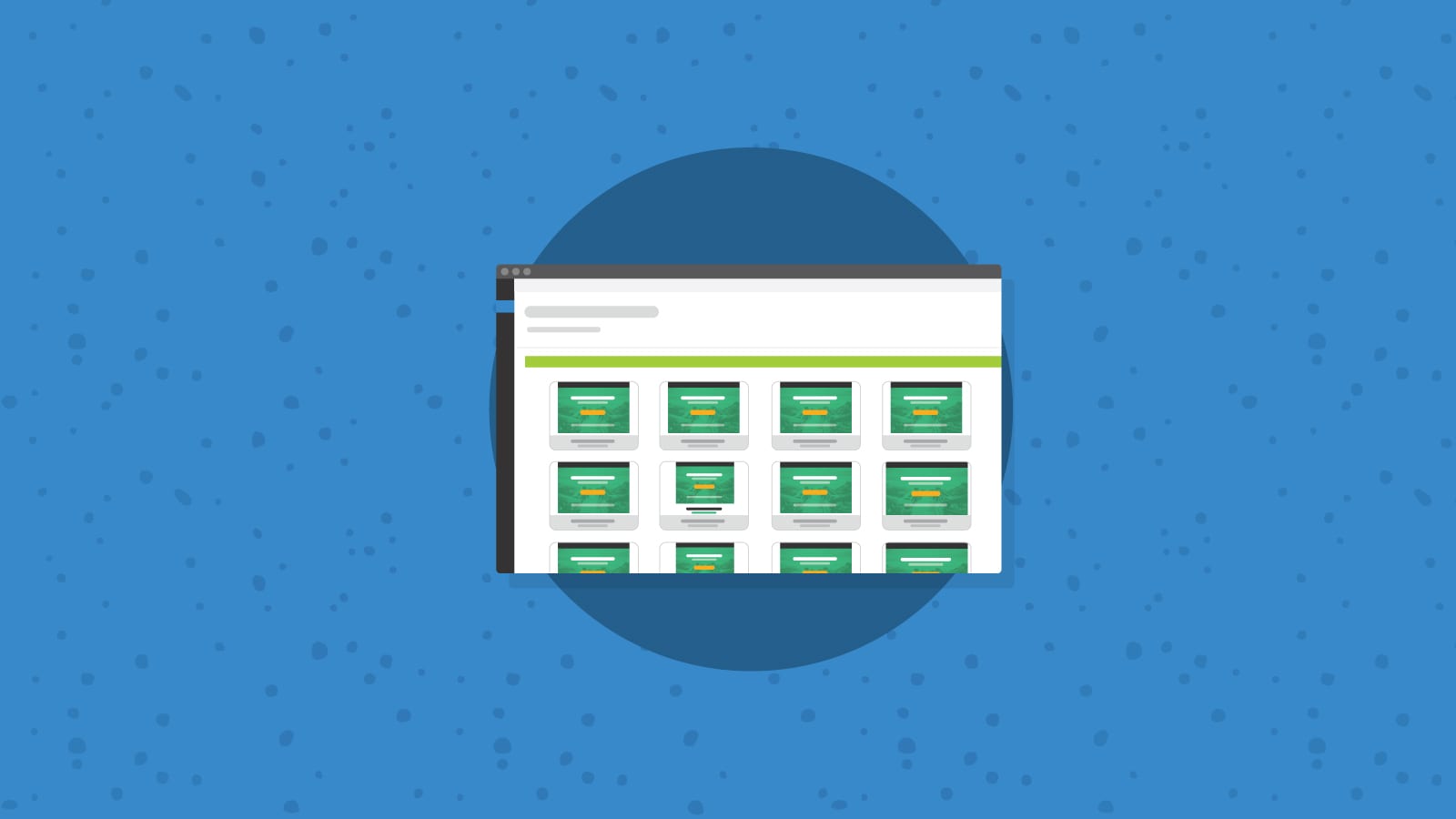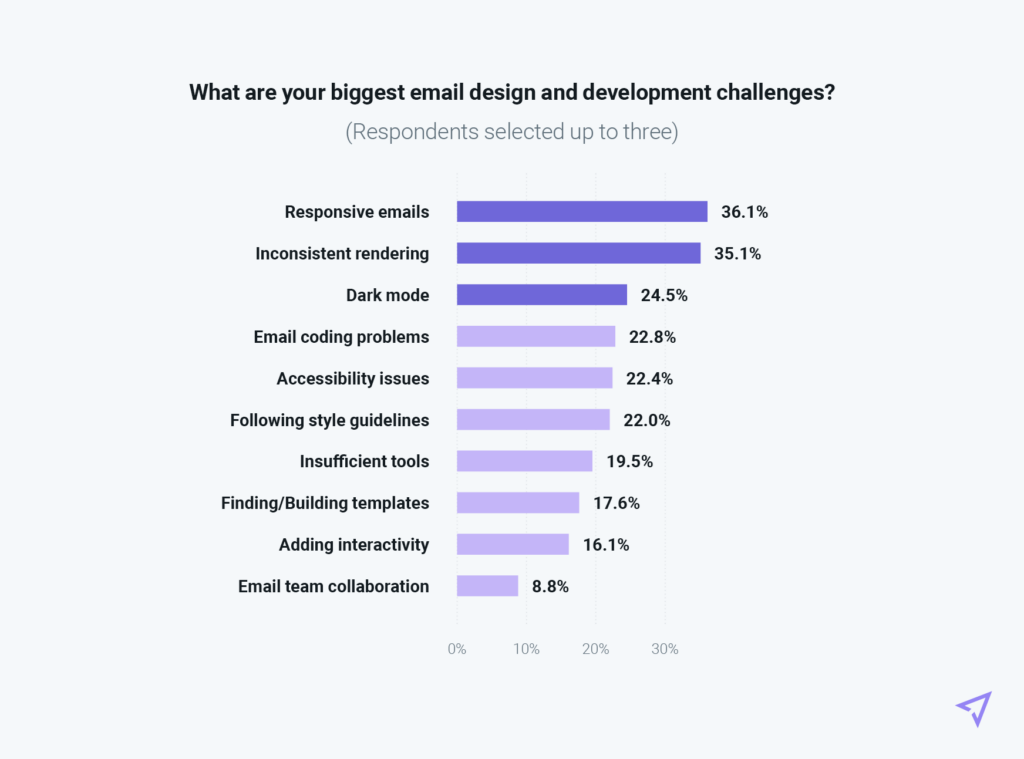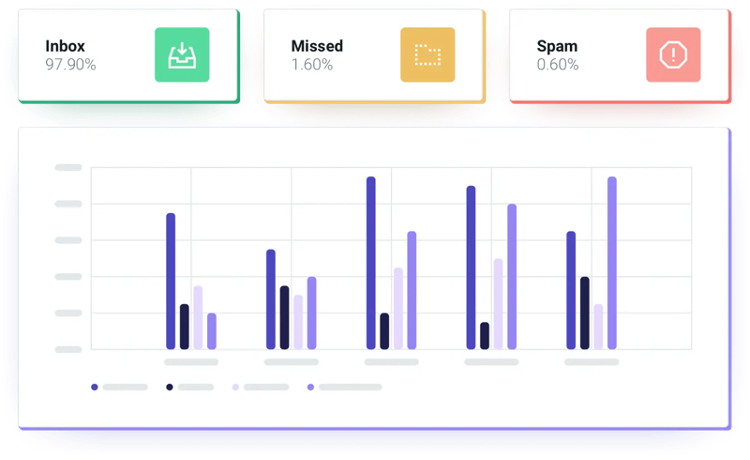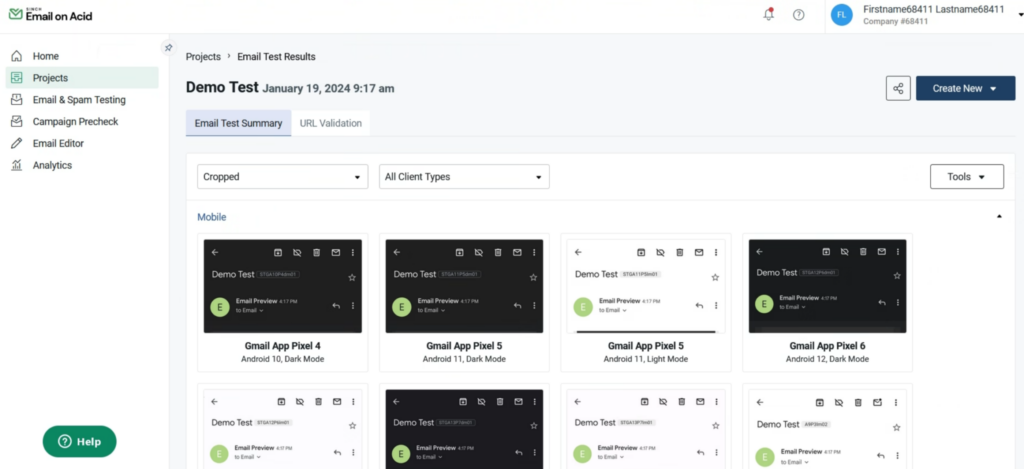Email Deliverability
Email Rendering and Deliverability: How to See the Future in the Inbox

Email Deliverability

Email deliverability is a nuanced topic. There are a lot of layers around optimizing emails so that they reach the inbox.
For one thing, you need the right email infrastructure to get messages delivered from one server to another. You need to think about email authentication protocols that verify you as the sender. You’ve got to validate emails and keep your list clean. There’s also your sender reputation and email blocklists to worry about.
People in the know will tell you email deliverability is all about achieving inbox placement. That doesn’t just mean getting mailbox providers like Gmail or Yahoo to accept your message. Your delivery rate is only the beginning of the story. Technically, even emails that end up in spam are “delivered.” So then, you might think you’ve achieved ultimate deliverability success when you reach the inbox.
We’re here to suggest that’s not entirely true. Allow us to explain…
Have you ever received a package that looked like it went through hell and back before it reached your house? Worse yet, maybe you opened it up and found the contents inside were destroyed.
It doesn’t happen often, but when it does, you probably think back to the opening of the classic ‘90s comedy Ace Ventura: Pet Detective. Jim Carrey really did a number on that package.
Broken email campaigns could also show up in subscribers’ inboxes looking like a pile of garbage. But it’s not because of an undercover pet detective. It’s because of a little thing email geeks call client rendering inconsistencies.
That’s why we think the very last step in email deliverability is ensuring that your campaigns render the way they’re supposed to. This may be much easier said than done.
So, what is email rendering anyway? It’s basically the way different email clients process and display your designs (or don’t display them as the case may be).
You see, various email clients have varied support for HTML and CSS. What looks pixel perfect when opened with Apple Mail looks frighteningly horrible in desktop version of Outlook, for example. It’s similar to how good old Internet Explorer (R.I.P.) wouldn’t display web pages in the same way as other browsers.
The only difference is, there are even more challenges in email development compared to web development. The people who code their own emails for a living are painfully aware of this. However, if you’re a digital marketer without that expertise, you may have been blissfully firing off campaigns and newsletters without any idea that there could be problems on the other end. (Confession: I was one of them.)
Sorry to burst your bubble. But email client rendering inconsistencies are a real challenge. Check out the website Can I Email to get all the dirty details about what works and what doesn’t.
Sinch Mailjet’s Inbox Insights study found that inconsistent rendering was one of the biggest design and coding challenges for email teams. It was second only to struggles with responsive email development.

It happens because different clients have their own rendering engines. Apple Mail and others use WebKit to render HTML emails. Gmail has its own way of doing things (of course). And desktop versions of Outlook have been using Microsoft Word to render emails. Yikes, right?
Thankfully, that’s changing with the new Outlook, but don’t expect email rendering problems to disappear any time soon.
A lot of email rendering issues aren’t the end of the world. Things like seemingly random white lines in Outlook may not look professional, but your subscribers can still engage with the content. Gmail may not support the web font your brand prefers, but that doesn’t change the message.
However, there are also rendering issues that can turn your big email campaign into a major missed opportunity. For example, color inversion in dark mode emails could cause it to be completely unreadable because the text disappears into the background. Likewise, interactive emails with fallbacks that don’t show up won’t get good engagement at all.
Delivering a broken email that your subscribers can’t engage with is almost as bad as ending up in spam.
That’s why marketing teams who are serious about getting things right always conduct email quality assurance (QA). This process includes checking out email previews on different clients and devices as well as other steps that help you avoid costly mistakes and broken emails.
Here are two things email marketers should wonder about before they launch a campaign:
Here’s some good news… The answers to these questions don’t have to be a complete mystery. There are two types of testing that let you see into the future. They are inbox placement testing and email pre-deployment testing.

Also known as seed testing, an inbox placement report uses seed mailboxes to test how inbox providers like Gmail and Yahoo are likely to filter your campaign.
That’s right. While these reports provide information on literal inbox placement for current campaigns, they can also help you accurately predict deliverability before a campaign is launched. Be aware that not all these services are created equal. You want to find one with a wide variety of seed mailboxes for the highest degree of accuracy.
Find out more about these reports and how the inbox placement rate is calculated.

Also known as pre-send testing, this process is used to preview the way different email clients, devices, and operating systems display your campaign.
Much like seed testing for inbox placement reports, pre-deployment testing involves sending your email to a variety of mailboxes. After that, a collection of screenshots from those mailboxes is sent back to you so you can preview the way they’ve rendered.
This allows email marketers to catch layout problems and inconsistent rendering before they hit send. Then the email team can adjust the code or swap design elements to ensure the best experience possible is delivered to every subscriber on the list.
Here at Sinch Email on Acid, we offer a total solution for email quality assurance. While the Email Previews are a key feature, you’ll also benefit from things such as email accessibility checks, spell check, inbox display previews, and more.
With the Email on Acid platform, you can design your own workflow for pre-send email testing, That includes selecting the clients and devices on which you want to view campaign previews. Think of it as an automated email marketing checklist.
If you’re looking for a solution that helps with email deliverability from start to finish, check out Mailgun Optimize. This is a complete email deliverability suite from Sinch Mailgun.
Mailgun Optimize provides solutions for monitoring blocklists, inbox placement testing, and list hygiene. The suite also provides comprehensive email previews powered by Sinch Email on Acid. You can use both Mailgun Optimize and Email on Acid with any email service provider (ESP).
Whichever option works for you, you’ll gain a ton of confidence knowing your emails make it to the inbox and look good when they’re opened.